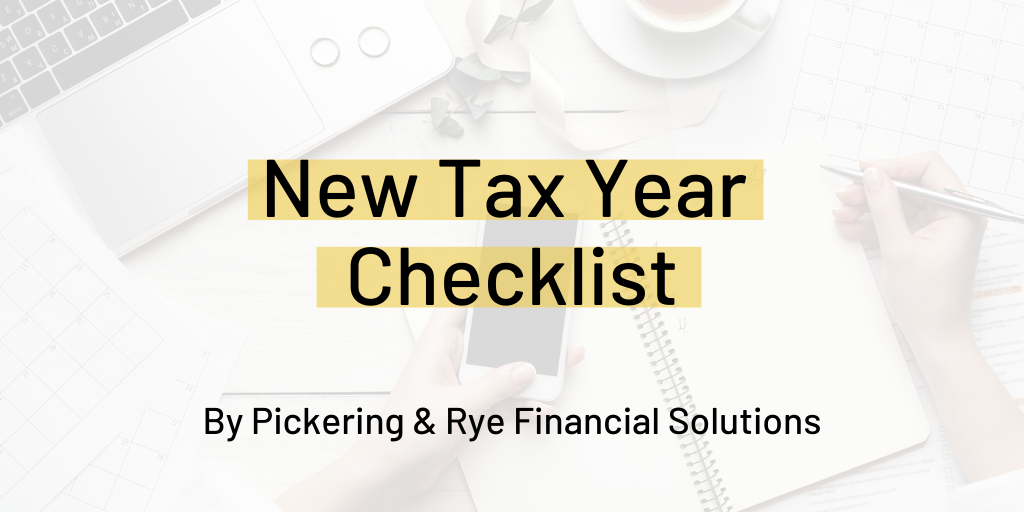Content provided by Pickering and Rye
Contact Pickering and Rye here
Early use of the new tax year’s allowances and exemptions could reap rewards over the longer term. Here are the key areas to think about. The health of family and friends will be uppermost in people’s minds right now. Consequently, the start of a new tax year may have passed relatively unnoticed. However, thinking longer-term and beyond the immediate crisis, and making early use of the investing tax breaks available, offers the potential to put you in a better position when markets do eventually recover.
Given the pace and magnitude of recent events, last month’s Budget already feels a very long time ago; but here’s a rundown of the main tax exemptions and allowances and what has, or hasn’t, changed for the new tax year.
Income Tax
The personal allowance – the amount that you can earn before you start paying Income Tax – is unchanged at £12,500. Similarly, the higher rate threshold – the point at which you will start to pay 40% Income Tax – remains at £50,000 in 2020/21. The additional rate tax band of £150,000 is also unchanged. There are some changes to the tax bands for Scottish taxpayers, which can be found on HMRC’s website.
Dividend and savings income
Through the Personal Savings Allowance, basic rate taxpayers can continue to earn £1,000 of interest on savings before paying tax in 2020/21. Those paying tax at the higher rate see their allowance remain at £500. There is no allowance for additional rate taxpayers. The Dividend Allowance has also remained unchanged at £2,000. That means you won’t pay tax on income generated from a share portfolio of around £57,000 held outside of an ISA or pension wrapper, based on a yield of 3.5%.
| Tax band | Tax rate on dividends above the allowance |
| Basic | 7.5% |
| Higher | 32.5% |
| Additional | 38.1% |
Both allowances have been frozen since 2018/19, limiting the scope to earn tax-free dividend and savings income, and underlining the importance of making maximum possible use of your ISA allowance.
Personal pensions
Ahead of the Budget, there had been considerable speculation over possible changes to pensions tax relief, but nothing was forthcoming; the government perhaps deciding that, given the oncoming coronavirus storm, now was not the time. Most people can still get tax relief on pension contributions worth up to £40,000 per tax year (or 100% of earnings, if less). This annual allowance is still reduced for some high earners, but the earnings threshold for this has risen, doubtless in response to pressure from NHS doctors, amongst others, who have faced large tax bills on extra pay.
Now the annual allowance will only begin to taper down for individuals who have an adjusted income above £240,000 rather than £150,000. Those with adjusted income under £240,000 will not be subject to the taper and will have a £40,000 annual allowance. However, the minimum that the annual allowance can taper down to will now be £4,000, rather than £10,000. The lifetime allowance – the most you are allowed in your pension pot before triggering an extra tax charge – increased by £18,100 to £1,073,100 from 6 April.
Capital Gains Tax
The Capital Gains Tax annual exempt amount for individuals has increased from £12,000 to £12,300. Effective and repeated use of your CGT exemption is a great way to transfer assets into ISAs or pensions to provide a shelter from any future tax liability on income or gains.
ISAs
The most you can put into your ISA remains at £20,000 for the 2020/21 tax year. This includes Stocks & Shares and Cash ISAs. What has changed is that the prospects for Cash ISA savers have become even more bleak following the cuts in interest rates to the lowest level in history.
What’s more, recent events make it probable that savings rates will remain low for many years to come. The current volatility in markets can be off-putting but investing in stocks and shares is likely to remain the best long-term option for ISA savers.
Junior ISAs
One big surprise announced in last month’s Budget was a more than doubling of the Junior ISA annual allowance to £9,000. Alongside pensions, Junior ISAs present a great opportunity to help give children a financial head start. Yet according to the latest available figures, 57% of Junior ISAs are held in cash¹: something parents should perhaps reconsider given the interest rate outlook.
Inheritance Tax
The Inheritance Tax nil-rate band for 2020/21 remains at £325,000 and has now been frozen at that level for 11 years. The residence nil-rate band has increased to £175,000, as set out in previous legislation. The government prudently put on hold plans to simplify the IHT regime, but it remains on the agenda. So now may be a good time to review making lifetime gifts before the tax rules are potentially ‘simplified’ into something less generous.
Entrepreneurs’ Relief
Although stopping short of scrapping it, Chancellor Sunak cut by 90% the tax break available when people sell their businesses. In means that, from April, business sellers will pay 10% on lifetime gains of up to £1 million, compared with the previous upper limit of £10 million. Standard Capital Gains Tax rates apply for gains above £1 million, which is 20% for higher rate taxpayers.
The value of an investment with St. James’s Place will be directly linked to the performance of the funds selected and may fall as well as rise. You may get back less than the amount invested.
An investment in a Stocks and Shares ISA will not provide the same security of capital associated with a Cash ISA or a deposit with a bank or building society.
The levels and bases of taxation, and reliefs from taxation, can change at any time and are dependent on individual circumstances.
- HMRC, Individual Savings Account statistics, April 2019

